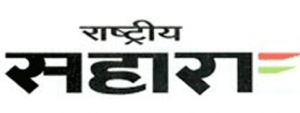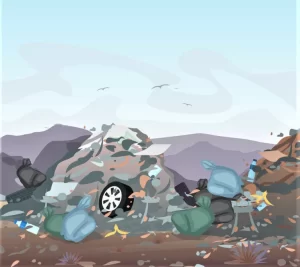 Date:31-03-22
Date:31-03-22
Northeast Hope
Assam-Meghalaya accord should pave the way for resolving other border disputes in the region
TOI Editorials
Assam and Meghalaya have signed a pact that resolves their interstate boundary dispute for six out of the 12 areas of differences. Recall that Assam has such boundary disputes with most of its neighbouring states that were carved out of undivided Assam. And these disputes have often boiled over into serious clashes. This was exemplified by deadly skirmishes between Assam and Mizoram police forces in July last year that left six Assamese policemen dead.
Keeping these disputes festering has neither been in national nor regional interest. But solving them has been tricky given that diverse ethnic populations of the region steadfastly hold on to their traditional cultural boundaries as opposed to constitutionally defined boundaries. The former date back to colonial times, whereas the states of Nagaland, Meghalaya, Mizoram and Arunachal Pradesh were carved out of Assam only in the 1960s and 70s. In fact, people residing along the Assam-Meghalaya border have long held two voter IDs corresponding to the two states.
Last year Assam and Meghalaya formed three committees each to look into their border dispute and asked locals to choose one of either state. With that process completed, the Survey of India will now demarcate the boundary as per the agreement. While this could become a template for resolving other border disputes in the Northeast, it’s true that the Assam-Meghalaya case was a little different – state governments made claims but locals lived side by side. But in the Assam-Mizoram and Assam-Nagaland disputes, there are allegations of encroachment into reserved forest areas of Assam, making resolution difficult. At the heart of the problem is the huge pressure on land combined with cultural sub-nationalism. Nonetheless, all states in the region must make concerted efforts to resolve interstate border disputes. This will not only help develop Northeast and actualise India’s Act East policy, but also prevent an adversarial China from fishing in troubled waters.
 Date:31-03-22
Date:31-03-22
Upping the Stakes In BIMSTEC
ET Editorials
The renewed emphasis on regional cooperation at the 5th Bay of Bengal Initiative for Multi-Sectoral Technical and Economic Cooperation (Bimstec) meet is timely. This is not only because of the recent developments in Europe and questions it has raised about the stability of the world order, but also in the context of the turmoil underway in this year’s chair Sri Lanka as well as the political chaos in neighbouring Pakistan. India’s leadership is critical.
The importance of regional cooperation and support is something that Sri Lanka is well aware of. India has stepped in to help the country tide over its current economic hardships. As the leading economy of the region, India has taken the lead. New Delhi will be providing $1 million in aid to augment the Bimstec secretariat.
The grouping has been a work in progress since 1997. The adoption of a charter on Wednesday, giving the group a formally stated purpose, principles and architecture is a major step in ensuring a strong network that will work to improve the resilience and economies of the region. The signing of three legal instruments — mutual legal assistance in criminal matters, mutual cooperation between diplomatic academies, and establishment of Bimstec technology transfer facility in Colombo — give concrete basis to the direction the member states intend to travel. The idea is to enhance trade, investment, tourism, technology and energy in the Bay of Bengal region. Improving resilience to combat poverty, climate change, natural disasters and pandemics is another important plank. A robust Bimstec is also critical to ensuring a free and open Indo-Pacific region — to providing an alternative to efforts being made by a belligerent China in the immediate neighbourhood and beyond.
 Date:31-03-22
Date:31-03-22
Identity and privacy
Prisoners’ identification Bill, which raises privacy and data safety concerns, requires deep scrutiny
Editorial
The Union government’s latest proposal to enable the collection of biometric and biological data from prisoners, besides the usual physical measurements, photographs and finger-prints, raises serious questions about its legal validity. Such questions are inevitable in an era in which people look at official efforts to gather personal data with suspicion. The practice of recording the photographs and fingerprints of prisoners is more than a century old in the country, backed by a colonial law dating back to 1920. The Union government now proposes to expand the idea of taking “measurements” to cover “finger-impressions, palm-print impressions, foot-print impressions, … physical, biological samples and their analysis”, besides “behavioural attributes including signatures [and] handwriting”. The Criminal Procedure (Identification) Bill, 2022, which embodies this goal, has been introduced in the Lok Sabha. Some Members have argued that the Bill went against the Supreme Court’s landmark judgment declaring privacy as a fundamental right in K.S. Puttaswamy. Some contended that the Bill enabled coercive drawing of samples and possibly involved a violation of Article 20(3), which protects the right against self-incrimination. There are other concerns too, such as the means by which the data collected will be preserved, shared, disseminated, and destroyed. The Bill allows the records to be preserved for 75 years, and to be destroyed earlier if the person is discharged or acquitted.
The concern over privacy and the safety of the data is undoubtedly significant. Such practices that involve the collection, storage and destruction of vital details of a personal nature ought to be introduced only after a strong data protection law, with stringent punishment for breaches, is in place. The 1920 law enabled the taking of measurements from convicts sentenced to a prison term of one year and above, and anyone arrested on a charge that attracts such a prison term; and thirdly, one who has furnished a bond for good behaviour and peace. However, the present Bill includes all convicts, and anyone arrested under any law in force or detained under any preventive detention law. There is a provision by which an arrested person, not accused of an offence against a woman or a child, or one that attracts a prison term of seven years or more, may disallow the taking of samples. Not all detainees may know that they can indeed decline to let biological samples to be taken. And it may be easy for the police to ignore such refusal and later claim that they did get the detainee’s consent. The Bill is controversial, as the tendency to arrest activists, protesters and even innocent people and invoke grave charges is on the rise. It would be in the fitness of things if it is referred to a Standing Committee for deeper scrutiny before it is enacted into law.
Date:31-03-22
Explaining Sri Lanka’s economic crisis
The country’s current situation is due to misguided policies and flawed external advice
R. Ramakumar is Professor, Tata Institute of Social Sciences, Mumbai
The Sri Lankan economy has been facing a crisis owing to a serious balance of payments (BoP) problem. Its foreign exchange reserves are depleting rapidly. It is becoming increasingly difficult to import essential consumption goods. The country is unable to repay past debts. This article is an effort to locate the proximate causes of the current crisis and document the roles of different groups and organisations in its making.
One can, of course, trace the roots of the crisis to colonialism and Sri Lanka’s post-war developmental pathway but let us stick to the last decade for our purposes. Even in the 21st century, Sri Lanka’s economic fortunes continued to be tied to the export of primary commodities such as tea and rubber, and garments. It mobilised foreign exchange reserves through primary commodity exports, tourism and remittances, and used it to import essential consumption items including food.
When Sri Lanka emerged from a 26-year long war in 2009, it was expected that economic growth would revive. Possibly because of pent-up demand, Sri Lanka’s post-war GDP growth was reasonably high at 8-9% per annum between 2009 and 2012. However, the economy was on a downward spiral after 2013 as global commodity prices fell, exports slowed down and imports rose. The average GDP growth rate almost halved after 2013. A counter-cyclical fiscal policy was ruled out, as the hands of the then Mahinda Rajapaksa government were tied by a $2.6 billion loan obtained from the International Monetary Fund (IMF) in 2009. During the period of the war, budget deficits were high. Further, the capital flight that accompanied the global financial crisis of 2008 drained Sri Lanka’s foreign exchange reserves. The IMF loan in 2009 was obtained in this context, with the conditionality that budget deficits would be reduced to 5% of the GDP by 2011.
With no pick-up in growth or exports, and the continuing drain of foreign exchange reserves, the new United National Party (UNP)-led coalition government approached the IMF in 2016 for another US$1.5 billion loan for a three-year period between 2016 and 2019. The IMF’s conditionality was that the fiscal deficit must be reduced to 3.5% by 2020. Other conditionalities included a reform of the tax policy and tax administration; control of expenditures; commercialisation of public enterprises; flexibility in exchange rates; improvement of competitiveness; and a free environment for foreign investment.
The IMF package led to a deterioration of Sri Lanka’s economic health. GDP growth rates shrank from 5% in 2015 to 2.9% in 2019. Investment rate fell from 31.2% in 2015 to 26.8% in 2019. Savings rate fell from 28.8% in 2015 to 24.6% in 2019. Government revenues shrank from 14.1% of the GDP in 2016 to 12.6% of the GDP in 2019. Gross government debt rose from 78.5% of the GDP in 2015 to 86.8% of the GDP in 2019.
New shocks to economy
In 2019, there were two further shocks to the economy. First, the Easter bomb blasts of April 2019 in churches in Colombo led to the death of 253 people. Consequently, the number of tourists fell sharply leading to a decline in foreign exchange reserves. The blasts dealt a severe blow to the prospects of economic recovery.
Secondly, the UNP-led government was replaced in November 2019 by a new government led by the Sri Lanka Podujana Peramuna (SLPP), headed by Gotabaya Rajapaksa. The SLPP had promised lower tax rates and wide-ranging sops for farmers during their campaign. On the surface, these promises appeared divergent from the IMF package. However, in the absence of a concrete policy alternative to the IMF’s neoliberal package, these promises were hollow.
Gotabaya Rajapaksa was quick to implement the ill-advised plan to slash taxes. In December 2019, the value added tax (VAT) rates were reduced from 15% to 8%. The annual threshold for VAT registration was raised from LKR 12 million to LKR 300 million. The annual income threshold for waiver of personal income tax was raised from LKR 500,000 to LKR 3,000,000. The nation building tax, the PAYE tax and the economic service charges were abolished.
Estimates show that there was a 33.5% decline in the number of registered taxpayers between 2019 and 2020, and close to 2% of the GDP was lost in taxes thus foregone. GST/VAT revenues were halved between 2019 and 2020.
The COVID-19 pandemic in 2020 made the bad situation worse. Exports of tea, rubber, spices and garments suffered. Tourism arrivals and revenues fell further. The pandemic also necessitated a rise in government expenditures: the fiscal deficit exceeded 10% in 2020 and 2021, and the ratio of public debt to GDP rose from 94% in 2019 to 119% in 2021.
Sri Lanka annually spent about $260 million (or about 0.3% of its GDP) on fertiliser subsidies. Most of the fertilisers are imported. To prevent the drain of foreign exchange reserves, the Gotabaya government came up with a novel, but thoroughly bizarre, solution in 2021. All fertiliser imports were completely banned from May 2021, and it was declared that Sri Lanka would overnight become a 100% organic farming nation. This policy, which was withdrawn in November 2021 after protests by farmers, literally pushed Sri Lanka to the brink of a disaster. Agricultural scientists were unanimous in warning the Gotabaya government of the potential losses from the organic farming policy. They wrote to the government that yields may drop by 25% in paddy, 35% in tea and 30% in coconut if chemical fertilisers were banned.
Fertiliser ban fiasco
The scientists were proven right. In February 2022, the IMF assessed that there was a “worse-than-anticipated impact of the chemical fertiliser ban on agricultural production”, which was likely to drag down the prospects of economic recovery. As agricultural production fell, more imports of food became necessary. But increasing imports was difficult in the face of foreign exchange shortages. Thus, inflation rose to 17.5% in February 2022. Also, a fall in the productivity of tea and rubber led to lower export incomes. And thus, the organic farming policy, which aimed to soften the pressure on reserves, ended up straining them even further.
The current Sri Lankan economic crisis, then, is the product of the historical imbalances in the economic structure, the IMF’s loan-related conditionalities, misguided policies of authoritarian rulers and the official embrace of pseudo-science. The future looks bleak too. The government might approach the IMF once again for a new loan with fresh conditionalities. With the global outlook appearing dim, a renewed push to such a deflationary policy would not just limit the prospects of economic revival, but also exacerbate the sufferings of the Sri Lankan people.
Date:31-03-22
Race to the bottom for gig workers
The food delivery sector is heading towards ‘quick delivery’ of food but is risking the safety of the delivery partners
Mohan Mani is a Visiting Fellow with the Centre for Labour Studies at the National Law School of India University (NLSIU). Sachin Tiwari is an independent researcher and is associated with the Platform study at the Centre for Labour Studies. (NLSIU)
 The recent announcement by Zomato CEO Deepinder Goyal of its plans to deliver food to customers in 10 minutes has raised a small twitter storm, forcing the CEO to put out a clarification. This raises several questions on the nature of delivery platforms, and the impact on delivery workers.
The recent announcement by Zomato CEO Deepinder Goyal of its plans to deliver food to customers in 10 minutes has raised a small twitter storm, forcing the CEO to put out a clarification. This raises several questions on the nature of delivery platforms, and the impact on delivery workers.
Platform industry is all about grabbing market share. This is done by introducing innovations to increase “efficiency”, which in the case of food delivery implies cost reduction and speed; both directly impact the platform worker, or “delivery partner” as he is euphemistically termed. It is the earnings of workers that represent the only variable cost element; cost reduction finally pinches his earnings. It forces him to “run twice as fast just to stay in the same place” to quote Alice in Wonderland.
Mr. Goyal in his clarification claimed, “We do not put any pressure on the delivery partner to deliver food faster.”
Well, in the platform world where the customer is the king (or queen), it is the delivery partner who will face the wrath of the customer for late delivery. There are enough anecdotal experiences from platform workers of the wrath turning ugly with customers even refusing to pay leaving the partner at the mercy of the platform, which often is insensitive to the grievances of the workers.
The Member of Parliament from Tamil Nadu, Karti Chidambaram was probably the most articulate among the Twitter responses. In a follow-up letter, he raised, among other queries, average earnings of the gig workers employed in food delivery, and average daily hours worked. The Centre for Labour Studies at the National Law School of India University (NLSIU) addresses these very questions in a recently completed study on food delivery platform work in the city of Bengaluru.
Major problems
First, on earnings of the platform worker – the numbers generally put out by platforms are the potential gross earnings a worker might earn.
In a system where all costs are borne by the worker, including fuel, asset cost including cost of maintenance and depreciation, all taxes and levies, the real earnings are substantially lower. At a time when fuel prices have been skyrocketing, some attention has been given to the impact of fuel on earnings in this sector.
However, the other cost elements are generally not discussed in popular reports. Between the two big daddies of the food delivery sector, Zomato and Swiggy, they claim creating employment for around five lakh “delivery partners”. They claim that these “partners” can earn a decent daily wage, with freedom to log on and off at will.
However, our study estimated that the net earnings for the worker was only around 40% of the total gross earnings from delivery pay-outs and incentives, with 30% eaten up by fuel costs and another 30% on various capital costs and levies.
What this meant was that the worker could make the platform worthwhile, with some money in the pocket after meeting all fixed cost obligations only if he stayed on the platform for really long hours. There was no question of the freedom to log on and off at will.
This leads to the second question of work intensity. Our study showed that over a window of a week, the worker averaged up to 13 hours per day, covering over 190 kilometres each day. Mr. Goyal, in his responses, explained the 8-principles around which Zomato was building its instant delivery platform — the seventh principle was delivery partner safety.
Well, at 13 hours and 190 kilometres travel on a two-wheeler through busy city traffic, it is surely impossible to ensure delivery partner safety.
Human value
Mr. Goyal was candid to state that innovation was the only way to survive and thrive in the food industry. His company has surely thrived, with current market prices giving the company market capitalisation of close to ₹1 lakh crore! The question is whether his “delivery partner” has been a partner in this prosperity? The contribution of the platform to technology and lifestyle improvement cannot be denied, particularly during the course of the pandemic. However, there is also the human involvement, providing the last link to make the platform an efficient delivery machine.
Surely this link is equally important to the ultimate success of the industry. Maybe the MP from Tamil Nadu can also get some answers to his queries through this study’s findings.
Date:31-03-22
Benign corruption and bigger enemies
Contractors’ allegations of ‘commission’ system has failed to generate a debate on corruption
S Bageshree
It was back on July 6, 2021, that the Karnataka State Contractors Association wrote to Prime Minister Narendra Modi, accusing the government machinery of extracting kickback of up to 40% for award of government contracts and clearance of bills. They pointed fingers at various layers of the hierarchy, from people’s representatives to bureaucrats. Though B.S. Yediyurappa was in office then, the association made the letter public in November, after Basavaraj Bommai took over, alleging that little had changed.
Though the Chief Minister had announced two committees headed by retired judges to scrutinise the tender estimates and conditions, there has been little talk on it since. Now, three months later, the association has threatened to launch an agitation by the end of April, stating that its grievance has gone unaddressed despite escalating it all the way to the top. But the State Government refused to reply to a question raised on the issue in the just-concluded Budget session, arguing that the allegation has no shred evidence.
A failed attempt
One of the grounds for change of guard in Karnataka, on July 28, 2021, was the repeated allegations of corruption against Mr Yediyurappa and members of his family. The situation had reached such a pass that Rural Development and Panchayat Raj Minister K.S. Eshwarappa had lodged a complaint with the Governor on “interference” in his Department by the CMO. Transfer of power to Mr. Bommai was meant to cleanse the system. Coincidence or otherwise, Mr. Yediyurappa stepped down within weeks of the contractors’ letter reaching PMO. But the renewed threat of agitation by the contractors is an indication of the cleansing process not going very far.
Corruption seems to be a “non-issue” in public discourse as Karnataka gets set for elections next year. In what appears to be a conscious change of course, particularly post-Uttar Pradesh results, BJP in Karnataka is stepping on the communal polarisation pedal hard. Even the eye-popping numbers being cited by the contractors — uncleared bills running to several thousand crore — are overshadowed by various communally divisive issues being pushed to the foreground. They range from banning hijab-clad girls from entering classrooms to attempts at introducing Bhagavad Gita in school curriculum. Public cynicism about corruption being a “norm” across parties and in all dispensations has made this effort easier. The mutually beneficial contractor-political class nexus being as old as the hills and the association only protesting the kickbacks going as high as 40% too is not a point missed by anyone.
Though Opposition Congress has every now and then reminded Mr. Modi that his calling the Siddaramaiah-led Government “10 percent sarkar” has now boomeranged and taunted him on the famous “Na khaunga, na khane doonga” slogan, it has not gained the expected traction. While part of the reason could be that the criticism comes from people who themselves can hardly boast of a clean image, more importantly, Congress is most often left reacting to the discourse set by the BJP. Janata Dal(Secular) has steered clear of the issue. Party leader and former Chief Minister H.D. Kumaraswamy has advised contractors that everything would be set right if they simply stop paying commission.
The “40 percent commission” episode in Karnataka is an indicator of the extent to which corruption is normalised and how easily people’s attention can be diverted from it by pointing to a “bigger enemy”, even when they are aware that the final victims of such a system are themselves.
 Date:31-03-22
Date:31-03-22
क्या अब गन्ना-किसानों के दिन फिरेंगे?
संपादकीय
 यह सच है कि देश की हजारों चीनी मिलें गहरे संकट में पिछले कुछ वर्षों से हैं क्योंकि अति-उत्पादन के कारण चीनी के दाम देश में ही नहीं विश्व-बाजार में भी गिरते जा रहे हैं। स्वास्थ्य सम्बन्धी चेतना के तहत वैसे भी लोग कम मीठा खाने लगे हैं और कई देश गन्ना की जगह अन्य कृषि उत्पादों से सस्ती चीनी बनाने लगे हैं। देश के करोड़ों गन्ना-किसानों के लिए बड़ी समस्या मुंह बाए खड़ी है। घाटे के कारण चीनी मिलें भुगतान नहीं कर पा रही हैं और अंततः बंद हो रही हैं। ऐसे में केंद्रीय सड़क परिवहन मंत्री की घोषणा सामने आई है कि आने वाले दिनों में हवाई जहाज में भी ईंधन के रूप में इथेनोल इस्तेमाल करने का प्रयोग जोर-शोर से चल रहा है। दरअसल इथेनोल चीनी (मोलेसेस) से बनाया जाता है यानी कृषि उत्पाद का बायो-फ्युएल में परिवर्तन। दुनिया में वैकल्पिक ईंधन पर शोध किया जा रहा है, क्योंकि तेल के भंडार अक्षय नहीं हैं, साथ ही तेल प्रदूषण का बड़ा कारण भी है। भारत में चीनी मिलों ने पिछले दो वर्षों में बड़े पैमाने पर इथेनोल बनाना शुरू किया है और अगले दो वर्षों में इथेनोल के हजारों विक्रय-केंद्र दिखाई देंगे। मंत्रालय की योजना है कि दोपहिया वाहनों और कारों को पूरी तरह इथेनोल-आधारित कर दिया जाएगा और इसके लिए दुनिया की कई बड़ी वाहन निर्माता कम्पनियां उत्सुकता दिखा रही हैं। भारत में पेट्रोल-डीजल का 84 प्रतिशत आयात किया जाता है। देश में ही विकल्प मिल जाएगा तो विदेशी पूंजी बचेगी। परिवहन वाले इथेनोल की कीमत भारत में फिलहाल 46 रु. प्रति लीटर है जबकि पेट्रोल कई जगह सैकड़ा पार कर चुका है। पेट्रोल में इथेनोल का मिश्रण 5 से बढ़ाकर 20% करने का ऐलान पीएम के उद्बोधन में भी देखा गया।
यह सच है कि देश की हजारों चीनी मिलें गहरे संकट में पिछले कुछ वर्षों से हैं क्योंकि अति-उत्पादन के कारण चीनी के दाम देश में ही नहीं विश्व-बाजार में भी गिरते जा रहे हैं। स्वास्थ्य सम्बन्धी चेतना के तहत वैसे भी लोग कम मीठा खाने लगे हैं और कई देश गन्ना की जगह अन्य कृषि उत्पादों से सस्ती चीनी बनाने लगे हैं। देश के करोड़ों गन्ना-किसानों के लिए बड़ी समस्या मुंह बाए खड़ी है। घाटे के कारण चीनी मिलें भुगतान नहीं कर पा रही हैं और अंततः बंद हो रही हैं। ऐसे में केंद्रीय सड़क परिवहन मंत्री की घोषणा सामने आई है कि आने वाले दिनों में हवाई जहाज में भी ईंधन के रूप में इथेनोल इस्तेमाल करने का प्रयोग जोर-शोर से चल रहा है। दरअसल इथेनोल चीनी (मोलेसेस) से बनाया जाता है यानी कृषि उत्पाद का बायो-फ्युएल में परिवर्तन। दुनिया में वैकल्पिक ईंधन पर शोध किया जा रहा है, क्योंकि तेल के भंडार अक्षय नहीं हैं, साथ ही तेल प्रदूषण का बड़ा कारण भी है। भारत में चीनी मिलों ने पिछले दो वर्षों में बड़े पैमाने पर इथेनोल बनाना शुरू किया है और अगले दो वर्षों में इथेनोल के हजारों विक्रय-केंद्र दिखाई देंगे। मंत्रालय की योजना है कि दोपहिया वाहनों और कारों को पूरी तरह इथेनोल-आधारित कर दिया जाएगा और इसके लिए दुनिया की कई बड़ी वाहन निर्माता कम्पनियां उत्सुकता दिखा रही हैं। भारत में पेट्रोल-डीजल का 84 प्रतिशत आयात किया जाता है। देश में ही विकल्प मिल जाएगा तो विदेशी पूंजी बचेगी। परिवहन वाले इथेनोल की कीमत भारत में फिलहाल 46 रु. प्रति लीटर है जबकि पेट्रोल कई जगह सैकड़ा पार कर चुका है। पेट्रोल में इथेनोल का मिश्रण 5 से बढ़ाकर 20% करने का ऐलान पीएम के उद्बोधन में भी देखा गया।
 Date:31-03-22
Date:31-03-22
समझौते से होगी प्रगति
संपादकीय
पूर्वोत्तर के राज्यों असम और मेघालय के बीच हुए सीमा समझौते ने क्षेत्र में स्थायी शांति की उम्मीद जगा दी है। दोनों राज्यों में हुआ समझौता अन्य राज्यों के लिए मॉडल बनकर विवादों को सुलझाने की नई राह दिखा सकता है। बीते पांच दशकों से दोनों राज्यों के बीच जारी सीमा विवाद सुलझाने के लिए मंगलवार को नई दिल्ली में दोनों राज्यों के मुख्यमंत्रियों ने एक ऐतिहासिक समझौते पर हस्ताक्षर किए। 1972 में असम से अलग करके मेघालय राज्य का गठन किए जाने के साथ ही दोनों राज्यों में विवाद चल रहा था और कई बार हिंसक झड़प का रूप ले चुका था। 2010 में ऐसी ही एक घटना में लैंगपीह में पुलिस गोलीबारी में चार लोग मारे गए थे। दोनों राज्यों में बारह स्थानों पर विवाद था। इस समझौते के जरिए छह स्थानों का विवाद सुलझा लिया गया है। इस समझौते से नगालैंड, अरुणाचल प्रदेश और मिजोरम के साथ असम के सीमा विवाद को भी सुलझाने का मार्ग प्रशस्त हो सकता है। असम-मेघालय सीमा विवाद सुलझाने की लंबे समय तक कोशिशें चलीं लेकिन कोई हल नहीं निकला था। 1985 में वाईवी चंद्रचूड़ समिति का गठन किया गया था। लेकिन उसकी रिपोर्ट बाहर ही नहीं आई। इस समझौते से कुल सीमा का 70 फीसदी विवाद सुलझ गया है। उम्मीद है कि अगले छह-सात महीनों में बाकी 30 प्रतिशत इलाके का विवाद भी सुलझ जाएगा। इस समझौते की राह में प्रधानमंत्री और गृह मंत्री की यह अपील बहुत उत्प्रेरक बनी कि जब भारत-बांग्लादेश आपसी सीमा विवाद सुलझा सकते हैं, तो देश के दो राज्य क्यों नहीं। दोनों राज्यों के मुख्यमंत्रियों ने सीमा विवाद सुलझाने के लिए 29 जनवरी को गुवाहाटी में एक समझौता ज्ञापन पर हस्ताक्षर किए थे। इसके मुताबिक असम 18.51 वर्ग किमी. जमीन अपने पास रखेगा और बाकी 18.28 वर्ग किमी. मेघालय को देगा। उम्मीद है कि यह समझौता पूर्वोत्तर राज्यों के दशकों पुराने सीमा विवाद को सुलझाने के लिए एक मॉडल के रूप में काम करेगा। असम के बंटवारे में ही सीमा विवाद की जड़ें छिपी हैं। बीते पांच-छह दशकों के दौरान इस मुद्दे को सुलझाने की कोई ठोस पहल नहीं हुई। अब इस समझौते से पूर्वोत्तर में असम के अन्य राज्यों से चल रहे विवादों के सुलझने की उम्मीद बनी है। राज्यों में चल रहे आपसी सीमा विवादों का खमियाजा मासूम लोग तो भुगतते ही हैं, प्रगति भी प्रभावित होती है। अब ये राज्य शांति और खुशहाली के साथ प्रगति के पथ पर एक साथ आगे बढ़ेंगे।
Date:31-03-22
देउबा की भारत यात्रा
संपादकीय
प्रधानमंत्री नरेन्द्र मोदी के निमंत्रण पर नेपाल के प्रधानमंत्री शेर बहादुर देउबा अपनी पत्नी आरजू देउबा के साथ एक अप्रैल को तीन दिवसीय भारत यात्रा पर आ रहे हैं। उनकी इस यात्रा से दोनों देशों के द्विपक्षीय संबंधों में नये आयाम जुड़ेंगे। हिमालयी राष्ट्र नेपाल और भारत के बीच सदियों पुराने धार्मिंक, सांस्कृतिक, व्यापारिक और राजनीतिक रिश्ते विशेष संबंधों पर आधारित हैं। हालांकि नेपाल में जब कम्युनिस्ट पार्टी सत्ता में आती है तब दोनों देशों के रिश्तों में गतिरोध भी पैदा होता है। कम्युनिस्ट नेता भारत विरोधी भावनाएं भड़काने का काम बढ़-चढ़कर करते हैं। कम्युनिस्ट नेता केपी शर्मा ओली के कार्यकाल में दोनों देशों के रिश्तों में दरारें आई थीं। लेकिन अब यह अतीत की बात हो गई है। नेपाली कांग्रेस के नेता शेर बहादुर देउबा के प्रधानमंत्री बनने के साथ ही रिश्ते सामान्य हो गए हैं। जुलाई, 2021 में देउबा ने प्रधानमंत्री का पद संभाला था। उनकी यह यात्रा चीन के विदेश मंत्री वांग यी की नेपाल यात्रा के बाद हो रही है। इसलिए देउबा की भारत यात्रा को कूटनीतिक क्षेत्र में बहुत महत्त्वपूर्ण माना जा रहा है। वास्तव में कम्युनिस्ट प्रधानमंत्री ओली के कार्यकाल में नेपाल का झुकाव चीन की ओर हो गया था। नेपाल की भू-राजनीतिक स्थिति ऐसी है कि यहां चीन के साथ अमेरिका की भी विशेष दिलचस्पी रहती है। हाल ही में अमेरिका ने मिलेनियम चैलेंज कॉरपोरेशन कॉम्पेक्ट के तहत नेपाल को 500 मिलियन अमेरिकी डॉलर की विकास सहायता दी है। माना जा रहा है कि नेपाल में चीन की सक्रियता को कम करने के लिए अमेरिका ने यह मदद की है। नेपाल भारत के लिए भी विशिष्ट महत्त्व रखता है, दोनों देशों की उपासना और पूजा पद्धति समान हैं और रोटी-बेटी के रिश्ते हैं। भारत के स्वतंत्रता संग्राम से प्रभावित होकर नेपाली कांग्रेस के नेताओं ने नेपाल को राणाशाही की निरंकुश सत्ता से मुक्ति दिलाई थी। इसलिए नेपाली कांग्रेस के नेता भारत के प्रति विशेष सम्मान का भाव रखते हैं। उम्मीद है कि देउबा की भारत यात्रा से दोनों देशों के बीच व्यापार, संपर्क, निवेश, बिजली और स्वास्थ्य के क्षेत्र में विशेष तौर पर प्रगति होगी। माना जा रहा है कि प्रधानमंत्री मोदी और देउबा के बीच होने जा रही मुलाकात में चीन और अमेरिका के साथ संबंधों को लेकर आपसी चर्चा हो सकती है।
Date:31-03-22
सामाजिक न्याय की दरकार
डॉ. फैयाज अहमद फैज
एक महत्त्वपूर्ण राजनैतिक घटनाक्रम में उत्तर प्रदेश की नवनियुक्त भाजपा सरकार ने अपनी परंपरा से हटते हुए मुस्लिम समाज में सामाजिक न्याय के प्रश्न को दृष्टिगोचर रखते हुए देशज पसमांदा समाज से आने वाले अपने कैडर दानिश आजाद को मंत्रालय में जगह दी है। ज्ञात रहे कि अब तक भाजपा में शिया सैय्यद ही ऐसे उच्च पदों पर आसीन होते रहे हैं। भारत के राजनैतिक इतिहास में यह दूसरी घटना है जहां एक राष्ट्रीय स्तर की पार्टी ने मुस्लिम समाज में सामाजिक न्याय को ध्यान में रखते हुए जातीय संरचना में पिछड़े कहे जाने वाले समाज को भागीदारी दी है। स्वतंत्रता आंदोलन के दौरान मुस्लिम विमर्श की वकालत करती मुस्लिम लीग के विरोध में उस समय के आसिम बिहारी के नेतृत्व में मुस्लिम समाज में सामाजिक न्याय के लिए संघषर्रत जमीयतुल मोमिनीन (मोमिन कॉन्फ्रेंस) ने संगठन और पसमांदा समाज की साधनविहीनता (उस समय वयस्क मतदान का अधिकार नहीं था और पढ़े-लिखे एवं पैसे वाले लोगों को ही मतदान का हक था जिससे पिछड़ा समाज लगभग वंचित था) के बावजूद मुस्लिम लीग को 1946 के चुनाव में अनेक सीटों पर मात दी थी जिसका संज्ञान लेते हुए सरदार पटेल ने स्वतंत्रता के बाद बिहार में बनने वाली सरकार में कांग्रेस की अशराफ लीडरशिप के विरोध के बावजूद मोमिन कॉन्फ्रेंस के दो साथियों नूर मुहम्मद और अब्दुल कय्यूम अंसारी को कांग्रेस की शपथ पर हस्ताक्षर कराए बिना मंत्रिमंडल में शामिल करवाया था।
ऐसा नहीं है कि भाजपा ने चुनाव जीतने के बाद ही इस ओर ध्यान दिया है। चुनाव से बहुत पहले ही उसने अल्पसंख्यक आयोग, मदरसा बोर्ड और उर्दू अकादमी के अध्यक्ष पदों पर पसमांदा समाज से आने वालों की नियुक्ति कर अपनी मंशा स्पष्ट कर दी थी। यह बात ध्यान देने की है कि अब तक इन अल्पसंख्यक संस्थानों के अध्यक्ष पद पर पारंपरिक रूप से लगभग सभी पार्टयिों द्वारा मुस्लिम समाज के उच्च शासकवर्गीय अशराफ मुसलमानों को ही नियुक्त किया जाता रहा है। हुनर हाट के आयोजन के माध्यम से भी मुस्लिम समाज की वंचित पिछड़ी जातियों को जोड़ने का प्रयास किया गया। मुस्लिम पिछड़ी जातियों में अधिकतर कामगर जातियां आती हैं, जो हुनर हाट जैसे कार्यक्रम से सीधे संबंधित हैं। आगामी लोक सभा चुनाव को ध्यान में रखते हुए यूपी मंत्रीमंडल में पसमांदा को शामिल कर इस दिशा में एक और कदम बढ़ाया गया है। ज्ञात रहे कि पसमांदा मुसलमान कुल मुस्लिम संख्या का 90% हैं। इनमें से कुछ प्रतिशत को भी पार्टी प्रभावित कर ले गई तो मुस्लिमों की बड़ी संख्या का वोट उसके पक्ष में हो सकता है।
पसमांदा आंदोलन के साथी चुनाव के दौरान लगातार मांग कर रहे थे कि पूर्वाचल की बुनकर बेल्ट से बुनकर को टिकट दिया जाए लेकिन प्रमुख विपक्षी पार्टी ने बुनकरों का वोट तो भरपूर लिया किंतु टिकट देना गवारा नहीं किया। दानिश आजाद पूर्वाचल के बुनकर समाज से आते हैं, जहां बुनकरों की बड़ी संख्या आबाद है। दानिश आजाद के मंत्रीमंडल में शामिल होने के साथ ही मुस्लिम समाज के सामाजिक न्याय का प्रश्न एक बार फिर चर्चा में आ गया है। सोशल मीडिया में खुलेआम अशराफ वर्ग के नौजवानों और बुजुगरे, जिनमें खुद को सेक्युलर, लिबरल, कट्टर धार्मिंक और राष्ट्रवादी कहने वाले लगभग सभी प्रकार के लोग हैं, द्वारा जातिसूचक अपमानजनक शब्द ‘जुलाहा’ का प्रयोग कर पूरे पसमांदा समाज के मान-सम्मान को तार-तार करने का प्रयास किया जा रहा है। इसे आप चंद लोगों के मानसिक दिवालियापन का नाम दे सकते हैं, लेकिन समाजवादी पार्टी के प्रवक्ता शहजाद अब्बास द्वारा एक चैनल डिबेट में यह कहना कि शिया को भागीदारी न देकर पसमांदा के नाम पर ऐसे चेहरे को मंत्री बनाना जिसे कोई नहीं जानता, मुसलमानों का अपमान है। इससे अर्थ निकलता है कि सैय्यद मंत्री बने तो मुसलमानों का सम्मान और देशज पसमांदा बने तो मुसलमानों का अपमान है। एक यूटय़ूब चैनल पर वरिष्ठ पत्रकार सैय्यद कासिम ने बुनकर समाज को मुसलमानों में आर्थिक और शैक्षिक रूप से सबसे मजबूत बिरादरी बताया। उन्हें कमजोर तबका मानने से इंकार किया जबकि यह पूर्णत: सत्य से परे है। मंडल कमीशन, रंगनाथ मिश्र कमीशन और सच्चर कमेटी की रिपोटरे के आधार पर मुस्लिम बुनकर समाज हर रूप से पिछड़ा है, और इसी कारण केंद्र और राज्य की आरक्षण लिस्ट में अन्य पिछड़े वर्ग में आता है जबकि हिंदू समाज का बुनकर वर्ग अनुसूचित जाति में आता है।
उर्दू मीडिया भी दानिश आजाद से आरएसएस की विचाराधारा से संबंधित असहज सवाल पूछ रहा है। शायद ही कभी उर्दू मीडिया ने भाजपा के किसी अशराफ लीडर से ऐसे सवाल किए हों। क्या आपने कभी देखा है कि किसी हिंदू पिछड़े दलित को राजनैतिक भागीदारी मिलने पर सवर्ण समाज की तरफ से सोशल मीडिया पर इस प्रकार से गाली-गलौज की जाती हो या किसी राजनैतिक पार्टी के प्रवक्ता द्वारा एक वंचित को राजनैतिक भागीदारी मिलने पर हिंदू समाज का अपमान बताया जाता हो? जबकि यही लोग इससे पहले शिया-सैय्यद लोगों के मंत्री बनाए जाने पर लगभग खामोश रहा करते थे।
कुशीनगर के रामकोला में भाजपा कार्यकर्ता बाबर की हत्या के पीछे यही मानसिकता उत्प्रेरक की भूमिका में प्रतीत होती है। इसका एक ऐतिहासिक पक्ष भी है, 1946 के इलेक्शन में कानपुर में एक पसमांदा कार्यकर्ता अब्दुल्लाह की मुस्लिम लीग के खिलाफ प्रचार करने के कारण हत्या करवा दी गई थी। होना तो यह चाहिए था कि मुस्लिम समाज का नेतृत्व करने वाले अशराफ वर्ग को अपने द्वारा संचालित संस्थाएं जैसे मुस्लिम पर्सनल लॉ बोर्ड, इमारते शरिया आदि में मुस्लिम समाज के वंचित तबकों को भी भागीदारी देकर सामाजिक न्याय की स्थापना करनी चाहिए न कि लोकतांत्रिक रूप से चुनी हुई सरकार में पसमांदा की भागीदारी पर इस तरह का क्षोभ प्रकट करे। इस पूरे प्रकरण से यह बात पूरी तरह साफ हो जाती है कि मुस्लिम समाज में जातिवाद की जड़ें कितनी गहरी हैं, और समाज में सामाजिक न्याय की तत्काल कितनी गंभीर रूप से आवश्यकता है।
 Date:31-03-22
Date:31-03-22
पूर्वोत्तर में नई उम्मीद
संपादकीय
केंद्रीय गृह मंत्री अमित शाह की मध्यस्थता के कारण असम और मेघालय के बीच करीब पांच दशक पुराने सीमा विवाद को खत्म करने को लेकर बनी सहमति एक बड़ी कामयाबी है। यकीनन, इससे भारतीय संघ-राज्य की परिकल्पना और मजबूत हुई है। संघीय ढांचे में दो राज्यों या दो प्रशासनिक इकाइयों के बीच भौगोलिक सीमाओं या संसाधनों के बंटवारे को लेकर मतभेद एक सामान्य बात है। ऐसे किसी विवाद में आदर्श स्थिति तो यही है कि संबंधित सूबों के मुख्यमंत्री या प्रशासक भारतीय संविधान की भावना का आदर करते हुए आपसी समझ-बूझ से इसे दूर कर लें, क्योंकि सभी प्रदेशों में बसने वाले लोग अंतत: अखंड भारत के ही नागरिक हैं और किसी के हितों की अनदेखी उचित नहीं है। पर अमूमन ऐसा होता नहीं है, मुद्दे उलझते जाते हैं और फिर वे केंद्र के पास या अदालत की शरण में पहुंच जाते हैं। कई बार तो ये हिंसक मोड़ भी ले लेते हैं, जैसा कि असम और मेघालय के मामले में पिछली जुलाई में हुआ था। तब दोनों सूबों के सुरक्षाबलों की झड़प में असम पुलिस के कई जवानों की जान चली गई थी और केंद्र को हस्तक्षेप करना पड़ा था।
सन् 1972 में असम से ही काटकर मेघालय का गठन हुआ था और तभी से करीब 500 वर्गमील इलाके पर अधिकार को लेकर दोनों राज्यों में अनबन रही है। ऐसे में, प्रधानमंत्री और गृह मंत्री के सक्रिय हस्तक्षेप के बाद अब दोनों पड़ोसी राज्यों ने विवाद के 12 में से छह बड़े बिंदुओं पर समझौता कर लिया है। उम्मीद है, बकाया मुद्दे भी जल्द सुलझा लिए जाएंगे। वैसे भी, दोनों प्रदेशों में एनडीए की सरकारें हैं, और प्रधानमंत्री नरेंद्र मोदी शुरू से खास तौर पर पूर्वोत्तर के आर्थिक विकास की पैरोकारी करते रहे हैं। उनकी सरकार बखूबी जानती है कि जब तक इन प्रदेशों में स्थायी शांति नहीं होगी, तब तक उनका विकास अवरुद्ध रहेगा। इसीलिए पूर्वोत्तर के प्रदेशों में कई स्तरों पर शांति-वार्ताएं की जाती रही हैं, और इनके नतीजे भी मिले हैं। खुद केंद्रीय गृह मंत्री ने कहा है, पिछले तीन वर्षों के दौरान इन प्रदेशों में 6,900 सशस्त्र विद्रोहियों ने आत्म-समर्पण किया है।
यह दुखद है कि देश के दो सबसे खूबसूरत भौगोलिक इलाके, जम्मू-कश्मीर और पूर्वोत्तर ज्यादातर अशांति की चपेट में रहे और न तो विदेशी-घरेलू पर्यटकों की मेजबानी के जरिये ये अपना आर्थिक हित साध सके, और न ही देश की औद्योगिक तरक्की का लाभ उठा सके। इन प्रदेशों में न रेलवे का विस्तार हुआ और न ही सड़कों का पर्याप्त विकास हो सका। निस्संदेह, इन प्रदेशों के राजनीतिक नेतृत्व की यह सामूहिक विफलता है, क्योंकि उन्होंने अपने सियासी नफे-नुकसान के कारण क्षेत्रीय आकांक्षाओं की लगातार अनदेखी की। ऐसे में, असम और मेघालय के बीच हुआ ताजा समझौता नई आशा जगाता है कि पूर्वोत्तर में अमन बहाली के काम को अब और गति मिल सकेगी। चूंकि असम के मुख्यमंत्री पिछले कई वर्षों से पूर्वोत्तर में भारतीय जनता पार्टी के बड़े रणनीतिकारों में शामिल रहे हैं, ऐसे में स्थानीय हितधारकों से उनका संपर्क-संवाद स्वाभाविक है। केंद्र सरकार इसका लाभ उठाते हुए यदि वहां व्यापक क्षेत्रीय समझ विकसित कर सकी, तो पूर्वोत्तर के साथ-साथ पूरे भारत को इसका फायदा होगा। देश के कई पड़ोसी प्रदेशों में अलग-अलग राजनीतिक पार्टियों की सरकारें हैं, जिनके बीच दशकों से तरह-तरह के विवाद हैं। उनके लिए भी यह समझौता एक प्रेरक उदाहरण हो सकता है।


 Date:31-03-22
Date:31-03-22 Date:31-03-22
Date:31-03-22
 Date:31-03-22
Date:31-03-22
 Date:31-03-22
Date:31-03-22 Date:31-03-22
Date:31-03-22 Date:30-03-22
Date:30-03-22 Date:30-03-22
Date:30-03-22 Date:30-03-22
Date:30-03-22
